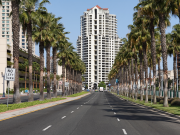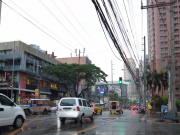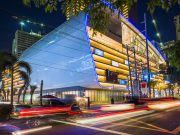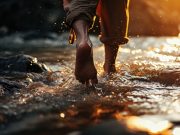Real estate investment has long been considered competent to diversify its portfolio and secure a comfortable retirement. With the potential for both passive income and long-term appreciation, real estate investment can provide a steady income stream even after retirement, making it an attractive option for many.
However, the core of successful real estate investing lies in the choice of location. The location of your investment property can significantly influence its value, rental income potential, and overall return on investment (ROI). A strategically chosen location can ensure consistent demand, high rental yields, and substantial capital growth over time.
In retirement, choosing the right site becomes even more crucial. The ideal place for a retirement property should offer good financial returns and a high quality of life, with easy access to essential amenities, healthcare facilities, recreational options, and a safe and peaceful environment.
This article will explore why investing in real estate for retirement in the Philippines is a promising avenue. We’ll explore the benefits of choosing the Philippines as your investment destination, the seven key factors to consider when selecting a location, and the top spots in the Philippines for real estate investment. By the end of this guide, you’ll have a comprehensive understanding of how to make the most of your real estate investments for a financially secure and comfortable retirement.
I. Understanding Real Estate Investing
Real estate investing involves purchasing, owning, managing, renting, and selling property for profit. It is a strategic avenue for wealth creation, where investors can leverage various real estate types to generate income and build wealth over time.
Definition and Basics of Real Estate Investing
Real estate investing is a broad field encompassing multiple investment strategies and property types. When we talk about real estate, we refer to physical land and anything attached to it, such as buildings or natural resources. The goal of real estate investing is to put money to work today and allow it to increase, creating more money for the future. The profit, or “return,” you make on your investments must be enough to cover the risk you take, taxes you pay, and the costs of owning the real estate investment, such as utilities and insurance.
Types of Real Estate Investment
There are several types of real estate investments that you can consider:
- Residential Properties: These include single-family homes, townhouses, apartments, vacation houses, etc. Investors earn through rental income or resale.
- Commercial Properties: This category includes office buildings, retail spaces, malls, etc. Commercial real estate often has higher returns than residential properties but also has higher risks.
- Industrial Properties: Warehouses, factories, and other industrial facilities fall under this category. Industrial real estate can be very lucrative, mainly when strategically located near transport hubs.
- Raw Land: Investors purchase undeveloped land to sell to a developer or use it for development purposes.
The Role of Real Estate in a Retirement Investment Portfolio
Real estate is pivotal in a retirement investment portfolio because it can provide steady income and capital appreciation. As an asset class, real estate offers unique benefits:
- Income Generation: Rental properties can provide a consistent stream of revenue, which can be particularly beneficial during retirement.
- Capital Appreciation: Real estate values tend to increase wealth over time.
- Diversification: Real estate can help diversify an investment portfolio, reducing risk by spreading investments across different types of assets.
- Tax Benefits: Depending on the region, real estate investors may benefit from tax deductions, credits, and exemptions.
- Inflation Hedge: Real estate tends to be a good hedge against inflation. As living costs increase, so too can rental income and property values.
Investing in real estate for retirement can offer financial stability and growth, making it a smart move for those planning a secure and comfortable future.
II. Why Choose the Philippines for Real Estate Investment?
With its vibrant economy and burgeoning real estate market, the Philippines offers promising opportunities for investors. The country’s robust economic growth and shift towards a more service and manufacturing-oriented economy make it an attractive destination for real estate investment.
Economic Growth and Stability of the Philippines
The Philippines has emerged as one of the most dynamic economies in the East Asia and Pacific region. The country’s economy showed significant expansion in 2022, with GDP growth rising to 7.6% in the third quarter of that year. After recovering from a contraction in 2020, the country is projected to bounce back in 2023 with a growth rate of around 5.3%. Despite some moderation, the economic growth remains healthy and robust.
This solid economic performance is partly due to the country’s transition from an agriculture-based economy to one focused more on services and manufacturing. Financial resilience and growth potential make the Philippines a prime location for real estate investment.
Overview of the Real Estate Market in the Philippines
The real estate market in the Philippines mirrors the country’s economic vitality. As urbanization and the economy grow, demand for residential and commercial properties has surged. From high-rise condominiums in bustling cities to idyllic beachfront properties, the diverse real estate offerings cater to a wide range of investor preferences.
Benefits of Investing in Philippine Real Estate for Retirement
Investing in Philippine real estate for retirement has several benefits:
- Strong Returns: The robust economy and growing demand for property contribute to solid returns on real estate investments.
- Affordable Prices: Compared to other countries, real estate in the Philippines is relatively inexpensive, making it easier for investors to enter the market.
- Growing Rental Market: The increasing urbanization and influx of foreign workers and tourists have led to a thriving rental market.
- Lifestyle Benefits: With its warm climate, beautiful landscapes, and friendly locals, the Philippines offers a high quality of life, making it an ideal retirement destination.
In conclusion, economic stability, a thriving real estate market, and lifestyle advantages make the Philippines a compelling choice for real estate investment, particularly for those planning for retirement.
III. Key Factors to Consider When Choosing Locations for Real Estate Investment
Choosing the right location is paramount in real estate investing. The location of a property can significantly impact its value, rental income potential, and overall return on investment. Here are some key factors to consider when selecting sites for real estate investments:
Accessibility and Convenience
One of the first things to consider is the property’s accessibility and convenience. Is it close to major roads and public transportation? Are there amenities such as shopping centers, hospitals, schools, and parks nearby? Properties in locations that offer easy access to essential services and amenities tend to be more attractive to renters and buyers.
Property Values and Market Trends
Understanding the local real estate market is crucial. Research the current property values in the area and how they have changed over time. What are the market trends? Is it a buyer’s or seller’s market? This information can help you gauge the potential for property price appreciation.
Future Development Plans
Investors should also consider future development plans in the area. Infrastructure projects, new commercial establishments, or upcoming residential developments can significantly boost property values. Look for areas with planned developments, as these locations often offer good opportunities for capital appreciation.
Safety and Security
The safety and security of a site have a significant impact on real estate values. Areas with low crime rates and good security features are more desirable, which can lead to higher property prices and rental rates. Check local crime statistics and speak with residents or law enforcement to get an idea of the safety level in the area.
Quality of Life and Community
Lastly, consider the area’s quality of life and sense of community. Locations with a strong sense of community, good schools, and a high quality of life can attract long-term tenants and buyers. Look for areas with a vibrant local culture, community events, and a strong school district.
In conclusion, while real estate investing can offer substantial financial rewards, it requires careful planning and research. By considering these key factors, you can choose locations that provide the highest potential for return on your investment.
IV. Top Locations for Real Estate Investment in the Philippines
The Philippines has several prime locations for real estate’s enormously growing population, each offering unique advantages. This section will delve into four key cities – Metro Manila, Cebu City, Davao City, and Baguio City – highlighting their unique selling points, potential drawbacks, and estimated return on investment.
Metro Manila: An Overview, Pros and Cons
Often regarded as the heart of the Philippines, Metro Manila is a bustling metropolis that serves as the country’s economic, political, cultural, and educational center. It encompasses several business districts and is an attractive top location for property investors, such as:
1. Makati City
This country’s central financial district offers many opportunities for investors. The community also has access to world-class medical facilities, shopping centers, restaurants, and other modern conveniences, making it an attractive investment.
Pros: High-end international clients, strong rental yields, and modern infrastructure.
Cons: Heavy congestion due to its urban population and lack of green spaces.
2. Pasig City
This city is located near the east side of Metro Manila and boasts commercial, industrial, and residential areas. Pasig offers excellent real estate investment opportunities due to its growth potential.
Pros: Rapidly developing real estate market and high rental yields.
Cons: High cost of living due to the concentration of businesses in Pasig City.
3. Taguig City
Taguig City is located near the center of Metro Manila and has seen rapid growth in recent years. Investors can benefit from its booming real estate market, including commercial, industrial, and residential properties.
Pros: Several property types to choose from with high rental yields available.
Cons: Limited availability of sought-after properties due to their high demand.
4. Mandaluyong City
Mandaluyong City is located at the heart of Metro Manila and is easily accessible by public transportation. Due to its strategic location, it has seen a steady influx of businesses, making it a desirable area for commercial and industrial investments.
Pros: Potential rental returns from office spaces, industrial parks, and other business-related properties are high.
Cons: Fewer residential options compared to other cities in Metro Manila due to its focus on business investments.
5. Quezon City
The city is a significant hub of commerce and trade, teeming with shopping centers, restaurants, and businesses. It also has several government offices, prestigious universities, and cultural landmarks. Its strategic location, robust economy, and vibrant culture make Quezon City an attractive place for real estate investment.
Pros: Easy access to transportation, resources, and amenities. A wide range of residential and industrial properties are available for purchase.
Cons: Development costs can be high due to the competition for investment properties in the city.
Cebu City: An Overview, Pros and Cons
Known as the “Queen City of the South,” Cebu City is the second largest city in the Philippines. It boasts a robust economy, beautiful beaches, and historical landmarks. It is a perfect balance of urban living and rural lifestyle, making it an ideal location for both business and leisure.
Pros: Unique culture, diverse range of activities, affordable housing options, and high ROI potential.
Cons: Sub-par public transportation system, limited job opportunities outside the hospitality industry.
Potential ROI: With proper maintenance and management, investors can expect up to 20% returns.
Davao City: An Overview, Pros, and Cons, Potential ROI
As Mindanao’s leading trade, commerce, and industry hub, Davao City offers a mix of urban development and natural attractions. Located in the southern Philippines, it is the largest city on the island and home to a population of over 1.6 million.
The town features modern infrastructure, world-class shopping malls and dining establishments, numerous tourist destinations, lush forests, pristine beaches, and several hospitals and universities. It has a booming economy driven by tourism, international trade investments, agricultural exports such as bananas, and a vibrant business process outsourcing industry.
Pros: Davao City offers high returns on investments with relatively low risks. It has a strong economy featuring many of the Philippines’ major export products, earning it the nickname “the Durian Capital of the Philippines.” The city also boasts well-developed infrastructure, with world-class airports and seaports, which makes global trade and travel much more accessible. Additionally, Davao City is known for its low crime rate due to the presence of a strong police force that ensures safety in the city.
Cons: While there are many positive aspects to living in Davao City, there are also some drawbacks. The cost of living can be high compared to other cities in the Philippines; rent and food prices can be higher than in other cities. Additionally, the city has not seen much growth in new businesses, making finding employment difficult for those looking for work. Finally, the language barrier may be an issue since English is less widely spoken than in other parts of the world.
Potential ROI: With its ongoing development and lower property prices, Davao City offers a potentially high ROI.
Baguio City: An Overview, Pros, and Cons, Potential ROI
Known as the “Summer Capital of the Philippines,” Baguio City is renowned for its cool climate, scenic views, and rich culture.
Pros: Baguio City is a great place to live, offering a mix of urban and rural living. With its cool climate and natural beauty, the city is ideal for those looking to escape the heat of other cities in the Philippines. Additionally, many job opportunities are available in significant industries, such as IT, tourism, and agriculture. Finally, the city is recognized for its diverse culture with indigenous and foreign influences.
Cons: Despite its many advantages, Baguio City does have some drawbacks. Transportation in the area can be limited, as most vehicles are privately owned or rented. Additionally, the cost of living may be high relative to other parts of the country due to its popularity as a destination. Finally, there are limited opportunities for those pursuing higher education.
Potential ROI: Given its popularity among tourists and retirees, investing in Baguio City can yield promising returns.
Other Emerging Cities for Real Estate Investment
Apart from these cities, other emerging locations include Iloilo City, Bacolod City, and Cavite. These areas show potential due to their growing economies, affordable property prices, and future development plans.
Choosing the best location for real estate investment in the Philippines depends mainly on your investment goals, budget, and risk tolerance. By conducting thorough market research and considering various factors, you can find a location that suits your investment strategy perfectly.
V. Tips for Successful Real Estate Investing in the Philippines
Real estate investing in the Philippines can be advantageous but comes with challenges. Here are some tips to help you navigate the process and ensure a successful investment:
Understanding the Local Laws and Regulations
The legal aspect is critical to any real estate transaction. Familiarize yourself with the local laws and regulations concerning property ownership, taxation, and rental operations. For instance, foreign investors should be aware that while they can own condominium units outright, they are prohibited from owning land in the Philippines.
Getting Professional Help: Hiring a Real Estate Agent or Broker
Navigating the Philippine real estate market can be complex, especially for first-time investors or foreigners. A local professional real estate agent or broker in HousingInteractive can provide invaluable assistance. They can guide you through the buying process, help negotiate deals, and provide insights into the local market conditions.
Doing Thorough Research and Due Diligence
Before investing, conduct thorough research and due diligence. This includes verifying property titles, checking the property’s condition, and understanding the local market trends. It’s also crucial to assess the property’s potential for return on investment, considering factors like location, accessibility, and future development plans.
Investing in the Long-Term
Real estate is typically a long-term investment. While flipping properties can yield quick profits, the most substantial returns often come from holding properties over the long term. This approach allows your property to appreciate while generating steady rental income.
VI. Conclusion
The adage, “Location, location, location,” holds when it comes to real estate investments, and this guide has underlined that in the context of the Philippines. The importance of location cannot be overstated. A strategic location can significantly enhance the value of your property, provide better amenities, and offer a higher standard of living – all pivotal factors for those considering retirement homes.
With its robust economy, tropical climate, and warm hospitality, the Philippines offers an enticing mix of urban and rural locations for real estate investments. Whether it’s the bustling cityscapes of Metro Manila or the serene beaches of Palawan, the country provides various options that cater to diverse lifestyle preferences.
Investing in Philippine real estate for retirement is not merely about securing a place to live. It’s about investing in a lifestyle of comfort, convenience, and relaxation. The availability of affordable properties and the potential for property value appreciation make the Philippines a lucrative market for real estate investments.
Moreover, the Philippines’ burgeoning tourism sector and the government’s supportive policies for foreign investors add to the country’s allure of real estate investment. The steady stream of tourists ensures a thriving rental market, providing an opportunity for a stable income stream even during retirement.
In conclusion, the Philippines presents a compelling case for real estate investment for retirement. It offers a unique blend of economic potential, cultural richness, and natural beauty, making it an excellent choice for those seeking a rewarding and relaxed retirement life. As you embark on this investment journey, remember that careful research and thoughtful decision-making are crucial to maximizing the benefits of your real estate investment.
With this comprehensive guide, we hope to have provided valuable insights to help you make an informed decision about investing in Philippine real estate for retirement. The path to a comfortable and fulfilling retirement could begin with a wise real estate investment in this vibrant archipelago.

























